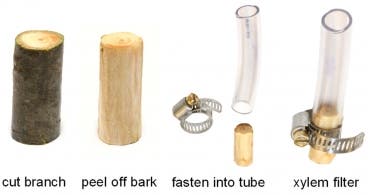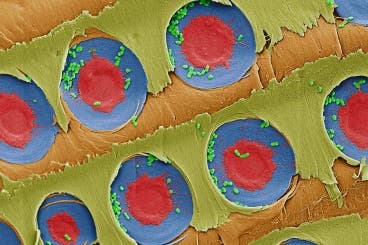Sometimes it’s best to make use of what’s already available and “designed”. There’s no need to reinvent the wheel when nature has been gracious enough to offer the fruits of billions of years worth of evolution – to those who have the ears and reason to discover, of course. For instance, a team of researchers at MIT found common tree branches, when discarded of bark, can make for excellent improvised filters that compete with nano-scale human designed technology. The cost-effective solution is easy to make with simple tools (just a knife or cutting tool) and has been found to effective in filtering as many as 99% of bacteria in water, as well as high diameter particles.
A water filter from trees

Rohit Karnik, one of the co-authors of the paper published in the journal PLoS ONE, believes their findings show that tree sap makes for an efficient material for water filtration, particularly for rural communities where more advanced filtration systems are not readily accessible.
“Today’s filtration membranes have nanoscale pores that are not something you can manufacture in a garage very easily,” Karnik says. “The idea here is that we don’t need to fabricate a membrane, because it’s easily available. You can just take a piece of wood and make a filter out of it.”
Sapwood is made of xylem, porous tissue that conducts sap from a tree’s roots to its crown through a system of vessels and pores. Conveniently, each vessel wall is riddled with tiny pores called pit membranes, through which sap migrates from one structure to the other, thus ensuring an uninterrupted flow through the whole tree. The pores also limit cavitation, a process by which air bubbles can grow and spread in xylem, eventually killing a tree. Thus, the xylem has ‘learned’ to trap bubbles and prevent them from reaching the wood.
“Plants have had to figure out how to filter out bubbles but allow easy flow of sap,” Karnik observes. “It’s the same problem with water filtration where we want to filter out microbes but maintain a high flow rate. So it’s a nice coincidence that the problems are similar.”
Using nature’s own mechanism, the MIT researchers put the sapwood to the test. Branches of white pine were collected and stripped of their outer bark. They then cut small sections of sapwood measuring about an inch long and half an inch wide, and mounted each in plastic tubing, sealed with epoxy and secured with clamps.
Sapwood filters 99% of bacteria

The first experiment was a particle filtration experiment. Water mixed with red ink particles measuring 70 to 500 nanometers in size was poured over the filter. After the liquid had passed through, the researchers noticed that the water, mostly uncontaminated, made its way through. When the sap was cut in half, much of the red dye was contained within the very top layers of the wood. The experiment showed that the sapwood was very effective at filtering out particles up 70 nanometers in size, but couldn’t contain those 20 nanometers or less.
Then a second experiment was devised to test biological filtration. Inactivated, E. coli-contaminated water was poured through the wood filter. It was found that the sapwood was able to filter out more than 99 percent of E. coli from water. According to the researchers most bacteria can be filtered out by sapwood, the smallest of which measures 200 nanometers. The sapwood can’t filter out viruses, however, which are much smaller in size than bacteria.
Clean water is becoming more and more of a commodity nowadays, as millions of people around the world, mostly from rural and impoverished areas, are denied access. There are a number of solutions available on the market, ranging from chlorine treatment, to boiling water, to nano-membrane filtering. All of these cost a lot of money, however. The MIT researchers believe their findings prove that there already is a readily available, cheap alternative. There are some drawbacks of course; for one, you need to keep the sapwood dry, else the filtering won’t work.
“There’s huge variation between plants,” Karnik says. “There could be much better plants out there that are suitable for this process. Ideally, a filter would be a thin slice of wood you could use for a few days, then throw it away and replace at almost no cost. It’s orders of magnitude cheaper than the high-end membranes on the market today.”
Was this helpful?



